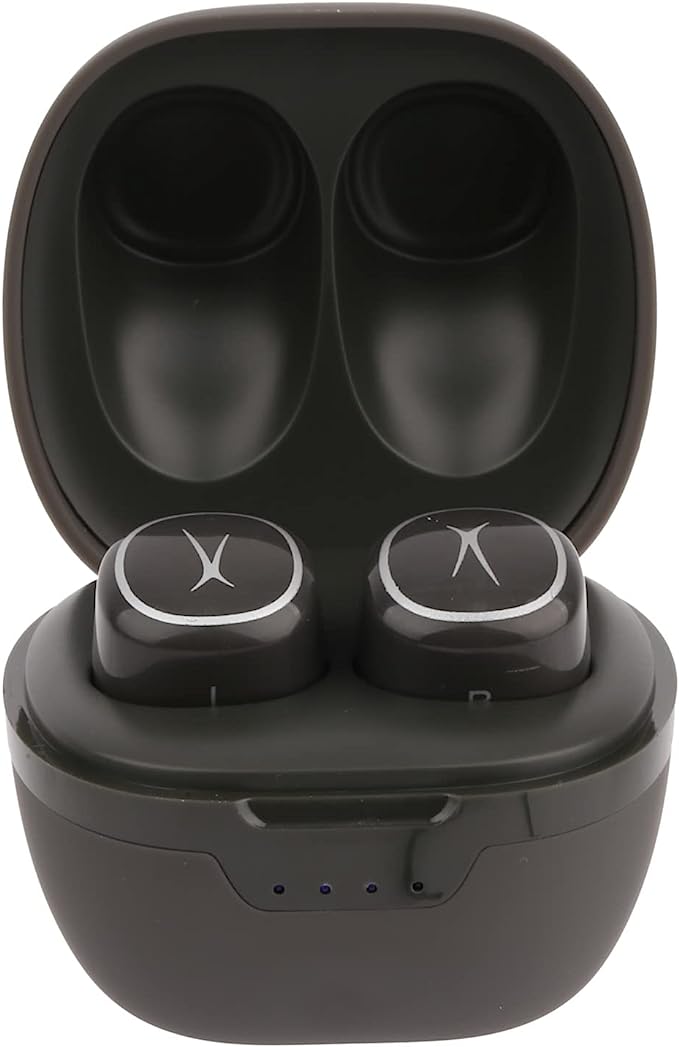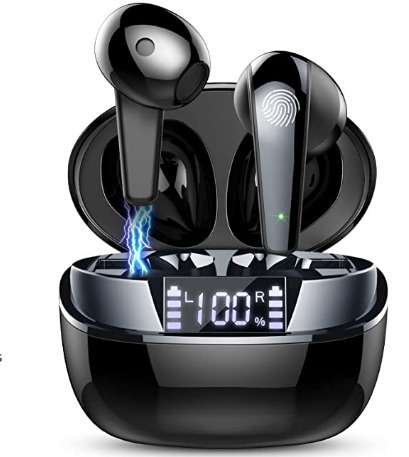The Engineering of Access: Deconstructing the Physics of the ZTOZ P4
Update on Nov. 24, 2025, 8:09 a.m.
For decades, high-fidelity audio was a walled garden, accessible only to those with significant disposable income. The narrative was simple: quality requires exotic materials and bespoke engineering. However, the relentless march of Moore’s Law and the globalization of supply chains have rewritten this story. We have entered the era of “Technological Democratization,” where high-performance components have become standardized commodities.
The ZTOZ P4 Wireless Earbuds stand as a testament to this industrial shift. They are not a luxury item; they are a triumph of manufacturing efficiency. To understand their value is to understand how mature technologies—like large-format dynamic drivers and hydrophobic coatings—can be integrated to deliver a sensory experience that defies their price point. It is a story of physics becoming accessible.

The Physics of Displacement: The 13mm Advantage
In the world of acoustics, there is a saying: “There is no replacement for displacement.” Sound is, fundamentally, the movement of air molecules. To create deep, resonant frequencies (bass), a speaker driver must move a significant volume of air.
High-end in-ear monitors often use complex, expensive armature drivers to achieve this. The ZTOZ P4 takes a different, more robust engineering path: the 13mm Dynamic Vibration Unit. * Surface Area: A 13mm driver has significantly more surface area than the standard 6mm or 8mm drivers found in many earbuds. * Air Movement: By leveraging this larger surface area, the diaphragm can move more air with less “excursion” (forward and backward movement). This reduces physical strain on the material, allowing for rich, distortion-free bass without requiring expensive, high-power amplifiers.
This is the physics of leverage. Instead of using expensive materials to force a small driver to work harder, the P4 uses a larger driver to achieve the same result effortlessly. It provides a “balanced stereo” profile naturally, relying on the geometry of the driver rather than complex digital correction.

The Invisible Shield: Chemistry of Nano-Coatings
Durability in electronics is often a battle against liquids. Water, and specifically the conductive salts in sweat, can short-circuit the microscopic pathways of a circuit board. The P4 achieves an IPX7 rating, meaning it can withstand submersion in 1 meter of water for 30 minutes.
This is achieved not just through rubber seals, which can degrade, but through Nano-Coating Material. * Surface Tension: Engineers apply a hydrophobic (water-repelling) layer at the molecular level to the internal components. This coating changes the surface energy of the material. * The Lotus Effect: When water touches this coating, the high contact angle prevents the droplet from spreading. Instead, it beads up and rolls off, unable to penetrate the microscopic gaps in the circuitry.
This chemical engineering ensures that the device remains functional in diverse environments, from a humid gym to a rainy commute, effectively hermetically sealing the user’s investment.
The Standard of Stability: Bluetooth 5.0
While newer Bluetooth versions exist, Bluetooth 5.0 remains the “Gold Standard” for reliable, cost-effective audio transmission. It represents the maturity of the protocol.
- Throughput: Bluetooth 5.0 doubled the speed and quadrupled the range of its predecessor (4.2). This bandwidth is more than sufficient for standard high-definition audio codecs.
- Energy Efficiency: The P4 leverages the low-power architecture of the Bluetooth 5.0 SoC (System on Chip) to achieve 5 hours of continuous playback on a single charge.
By utilizing this mature, stable standard, the P4 ensures “One-Step Pairing” and rock-solid connectivity without the “early adopter tax” associated with bleeding-edge protocols. It prioritizes reliability over novelty.

Ergonomics and Noise Reduction
The final piece of the puzzle is the interface between the machine and the human. The P4 weighs a mere 3.8 grams per earbud.
[Image of human ear canal anatomy]
This lightweight design is crucial for “passive noise cancellation.” By fitting snugly in the ear canal without the downward drag of heavy batteries, it creates a physical seal. This seal blocks ambient noise (like office chatter) purely through occlusion, while the dual-mic noise reduction algorithm processes the input for clear calls, separating the human voice from environmental static.

Conclusion: The Victory of Engineering
The ZTOZ P4 Wireless Earbuds are a case study in the efficiency of modern manufacturing. They demonstrate that high-fidelity sound, robust waterproofing, and reliable wireless connection are no longer the exclusive domain of luxury brands.
By optimizing standardized technologies—13mm drivers, nano-coatings, and Bluetooth 5.0—engineers have created a product that delivers exactly what is needed, stripping away the superfluous to reveal the essential physics of a great audio experience. It is sound, simplified and democratized.



































